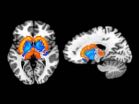(Press-News.org) Malware is a type of malicious program whose general aim is to profit economically by carrying out actions without the user's consent, such as stealing personal information or committing economic fraud. We can find it "in any type of device ranging from traditional cell phones to today's smartphones, and even in our washing machine," explained one of the researchers, Guillermo Suarez de Tangil, from the Computer Science Department at UC3M.
With the massive sales of smartphones in recent years (more than personal computers in all of their history), malware developers have focused their interest on these platforms. The amount of malware is constantly increasing and it is becoming more intelligent; for that reason, "security analysts and market administrators are overwhelmed and cannot afford exhaustive checking for each app," noted Guillermo Suarez de Tangil. The development of this type of malicious programs has become a large industry that incorporates code reuse methodology. "They don't create a program from scratch, but rather they create a new sample," he stated.
The tool, developed by these UC3M researchers, baptized DENDROID and detailed in a study published in the review Expert Systems with Applications, allows security analysts to scrutinize a large quantity of apps to determine the origins of a malware sample and the family to which it belongs. In addition, if a classification not directly matching a specific family is found, it allows a phylogenetic tree to be extracted from the application to determine the malware's possible ancestors. "The developers generally reuse components of other malwares, and that precisely is what allows us to construct this genetic map," Guillermo Suárez de Tangil explained. This information allows security analysts to take on the challenge of analyzing samples of malware never seen before.
The antiviruses used in smartphones employ detection engines based on signatures, which identify a specific type of malware from some features previously observed. "For this reason, its effectiveness is questionable," elaborated Guillermo, because smartphone resources are more limited that those of a PC. Furthermore, the high frequency of new pieces of malware makes it impossible to incorporate signatures at the same time," he pointed out. In contrast, the new tool they have developed "will help an analyst to protect markets and ensure that users will not need to completely depend on detectors in smartphones", the researcher concluded.
INFORMATION:
The project pertains to the information technologies security group COSEC at UC3M: (http://www.seg.inf.uc3m.es) which has specialized in this field because of its special relevance for society. Specifically, they have just launched a project on security and privacy in IoY (Internet of You) in the Plan Nacional de Investigación(National Research Plan).
Further information:
Title: Dendroid: A Text Mining Approach to Analyzing and Classifying Code Structures in Android Malware Families. Authors: G. Suarez-Tangil, J.E. Tapiador, P. Peris-Lopez, J. Blasco. Review: Expert Systems with Applications. Elsevier, vol. 41:4, pp. 1104-1117 (2014). DOI: 10.1016/j.eswa.2013.07.106
A system that facilitates malware identification in smartphones
2014-09-09
ELSE PRESS RELEASES FROM THIS DATE:
Testing the fossil record
2014-09-09
Palaeontologists have developed methods to try to identify and correct for bias and incompleteness in the fossil record. A new study, published on 4 September 2014 in the journal Nature Communications, suggests that some of these correction methods may actually be misleading. The work is led by Dr Alex Dunhill (University of Leeds, formerly at the Universities of Bath and Bristol), together with Hannisdal (University of Bergen) and Professor Michael Benton (University of Bristol).
Back to the origin of animals
"The Earth keeps changing. Life keeps evolving. And there ...
How age alters our immune response to bereavement
2014-09-09
Young people have a more robust immune response to the loss of a loved one, according to new research from the University of Birmingham, providing insight into how different generations cope with loss.
The study, published in the journal Immunity and Ageing, shows how the balance of our stress hormones during grief changes as we age – meaning elderly people are more likely to have reduced immune function and, as a result, suffer from infections.
It is the first research to compare different generations and display the relationship between stress hormones and immune ...
Myriad myPath™ melanoma test reduced indeterminate cases by 76 percent
2014-09-09
SALT LAKE CITY, Utah, Sept. 9, 2014 – Myriad Genetics, Inc. (Nasdaq: MYGN) today presented results from a pivotal clinical utility study of the Myriad myPath™ Melanoma test at the 2014 College of American Pathologists (CAP) annual meeting in Chicago, Ill. Myriad myPath Melanoma is a novel diagnostic test that differentiates malignant melanoma from benign skin lesions with greater than 90 percent accuracy and helps physicians deliver a more objective and confident diagnosis for patients.
This study evaluated the impact of the myPath Melanoma diagnostic test on expert ...
Biologists try to dig endangered pupfish out of its hole
2014-09-09
Berkeley — Scientists estimate that fewer than 100 Devils Hole pupfish remain in their Mojave Desert home, but a conservation biologist at the University of California, Berkeley, is giving important guidance in the efforts to rescue them by establishing a captive breeding program.
Considered the world's rarest fish, with one of the smallest geographic ranges of any wild vertebrate, the tiny pupfish (Cyprinodon diabolis) – about one-inch long as an adult – neared extinction in spring 2013 when populations dropped to an all-time low of 35 observable pupfish. While more ...
Tracing water channels in cell surface receptors
2014-09-09
G protein-coupled receptors (GPCRs) are the largest class of cell surface receptors in our cells, involved in signal transmission across the cell membrane. One of the biggest questions is how a signal recognized at the extracellular side of a GPCR induces a sequence of conformational changes in the protein and finally evokes an intracellular response. EPFL scientists have now used computer modeling to reveal in molecular detail the structural transitions that happen inside GPCRs during the signal transduction process. They discovered that a central step in the trans-membrane ...
Shift in Arabia sea plankton may threaten fisheries
2014-09-09
A growing "dead zone" in the middle of the Arabian Sea has allowed plankton uniquely suited to low-oxygen water to take over the base of the food chain. Their rise to dominance over the last decade could be disastrous for the predator fish that sustain 120 million people living on the sea's edge.
Scientists at Columbia University's Lamont-Doherty Earth Observatory and their colleagues are the first to document the rapid rise of green Noctiluca scintillans, an unusual dinoflagellate that eats other plankton and draws energy from the sun via microscopic algae living within ...
Buckyballs and diamondoids join forces in tiny electronic gadget
2014-09-09
Menlo Park, Calif. — Scientists have married two unconventional forms of carbon – one shaped like a soccer ball, the other a tiny diamond – to make a molecule that conducts electricity in only one direction. This tiny electronic component, known as a rectifier, could play a key role in shrinking chip components down to the size of molecules to enable faster, more powerful devices.
"We wanted to see what new, emergent properties might come out when you put these two ingredients together to create a 'buckydiamondoid,'" said Hari Manoharan of the Stanford Institute for Materials ...
Eating habits, body fat related to differences in brain chemistry
2014-09-09
People who are obese may be more susceptible to environmental food cues than their lean counterparts due to differences in brain chemistry that make eating more habitual and less rewarding, according to a National Institutes of Health study published in Molecular Psychiatry.
Researchers at the NIH Clinical Center found that, when examining 43 men and women with varying amounts of body fat, obese participants tended to have greater dopamine activity in the habit-forming region of the brain than lean counterparts, and less activity in the region controlling reward. Those ...
Study sheds light on how stem cells can be used to treat lung disease
2014-09-09
Munich, Germany: A new study has revealed how stem cells work to improve lung function in acute respiratory distress syndrome (ARDS).
Previous studies have shown that stem cells can reduce lung inflammation and restore some function in ARDS, but experts are not sure how this occurs. The new study, which was presented at the European Respiratory Society's International Congress today (09 September 2014), brings us a step closer to understanding the mechanisms that occur within an injured lung.
ARDS is a life-threatening condition in which the efficiency of the lungs ...
Birth measurements could predict lung health in teen years
2014-09-09
Munich, Germany: A new study has found that factors, such as birth weight, gestational age at birth and lung function, growth and other measures at 8 years, can be used to predict lung function during mid to late teenage years.
The study, presented at the European Respiratory Society (ERS) International Congress in Munich today (9 September 2014), is part of a growing area of research aiming to understand how early life factors have an impact on the development of disease into adulthood.
Data out of the Avon Longitudinal Study of Mothers and Children (ALSPAC) from ...





